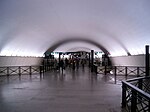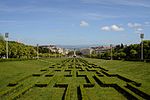Jorge Álvares Foundation

Jorge Álvares Foundation is a non-profit organization with public utility status established in Lisbon on 14 December 1999. It was recognized by the Portuguese government in 2002, and received its public utility status in 2004. It received its initial funding from the Fundação para a Cooperação e o Desenvolvimento de Macau (MOP 50 million) and Stanley Ho (MOP 100 million).The foundation is named after Jorge Álvares, credited as the first European to have reached China by sea during the Age of Discovery. According to its by-laws, it takes as its purpose the development of cultural, educational, scientific, artistic, and social activities that promote an intercultural dialogue resulting from the specificity of Macau and multicentury Portuguese presence in this territory. In addition, it intends to support Portuguese institutions that promote the study and promotion of Macau, as well as activities related to the Macanese diaspora.
Excerpt from the Wikipedia article Jorge Álvares Foundation (License: CC BY-SA 3.0, Authors, Images).Jorge Álvares Foundation
Rua Castilho, Lisbon Santo António (Santo António)
Geographical coordinates (GPS) Address Nearby Places Show on map
Geographical coordinates (GPS)
| Latitude | Longitude |
|---|---|
| N 38.72293 ° | E -9.1519617 ° |
Address
BBVA
Rua Castilho 39
1250-068 Lisbon, Santo António (Santo António)
Portugal
Open on Google Maps








